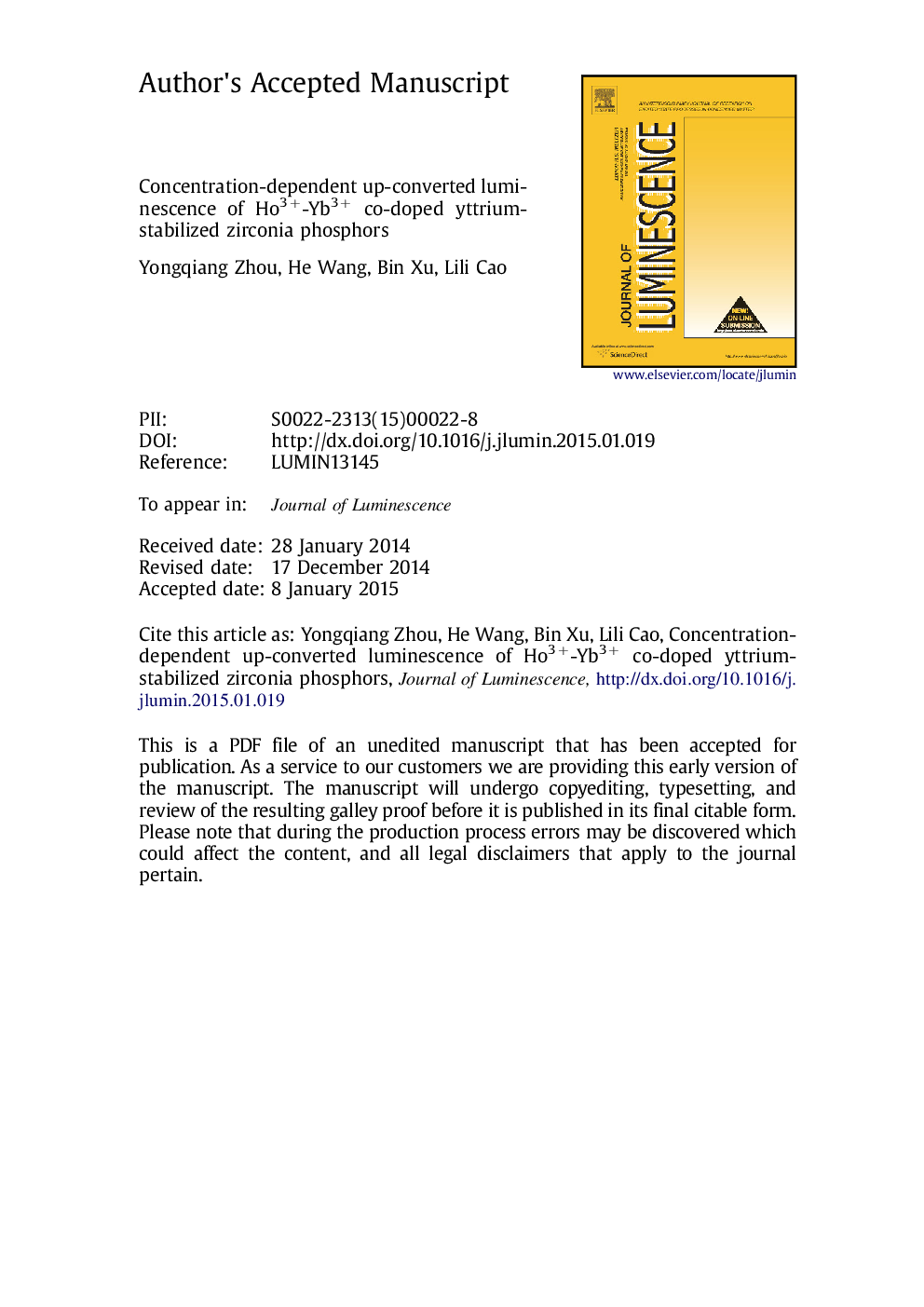| Article ID | Journal | Published Year | Pages | File Type |
|---|---|---|---|---|
| 5398958 | Journal of Luminescence | 2015 | 15 Pages |
Abstract
Up-conversion(UC) phosphors of Ho3+-Yb3+ co-doped yttrium-stabilized zirconia were successfully synthesized using the chemical co-precipitation method. The phosphors were characterized by X-ray diffractometry (XRD) and fluorescence spectroscopy, and then the proposed UC mechanism was given in detail. The results indicate that doping 8 mol% Y3+ ions into zirconia can stabilize the cubic phase (c-ZrO2) to room temperature in phosphors which were sintered at 1200 °C for 3 h. Under 980 nm excitation, Ho3+-Yb3+ co-doped phosphors exhibit intense green luminescence corresponding to the Ho3+:(5F4,5S2)â5I8 transition, and the luminescence intensities of phosphors much depend on Yb3+ concentrations. With the increase of Yb3+ concentration, luminescent intensity increases initially and then decreases when Yb3+ doping content exceeds 7 mol% mainly due to cross relaxation (CR) processes. Moreover, high Ho3+ doping concentration is detrimental to the overall UC intensity owing to the CR processes. Finally, sample co-doped with 0.1 mol% Ho3+ and 7 mol% Yb3+ obtains the strongest UC luminescence.
Related Topics
Physical Sciences and Engineering
Chemistry
Physical and Theoretical Chemistry
Authors
Yongqiang Zhou, He Wang, Bin Xu, Lili Cao,
